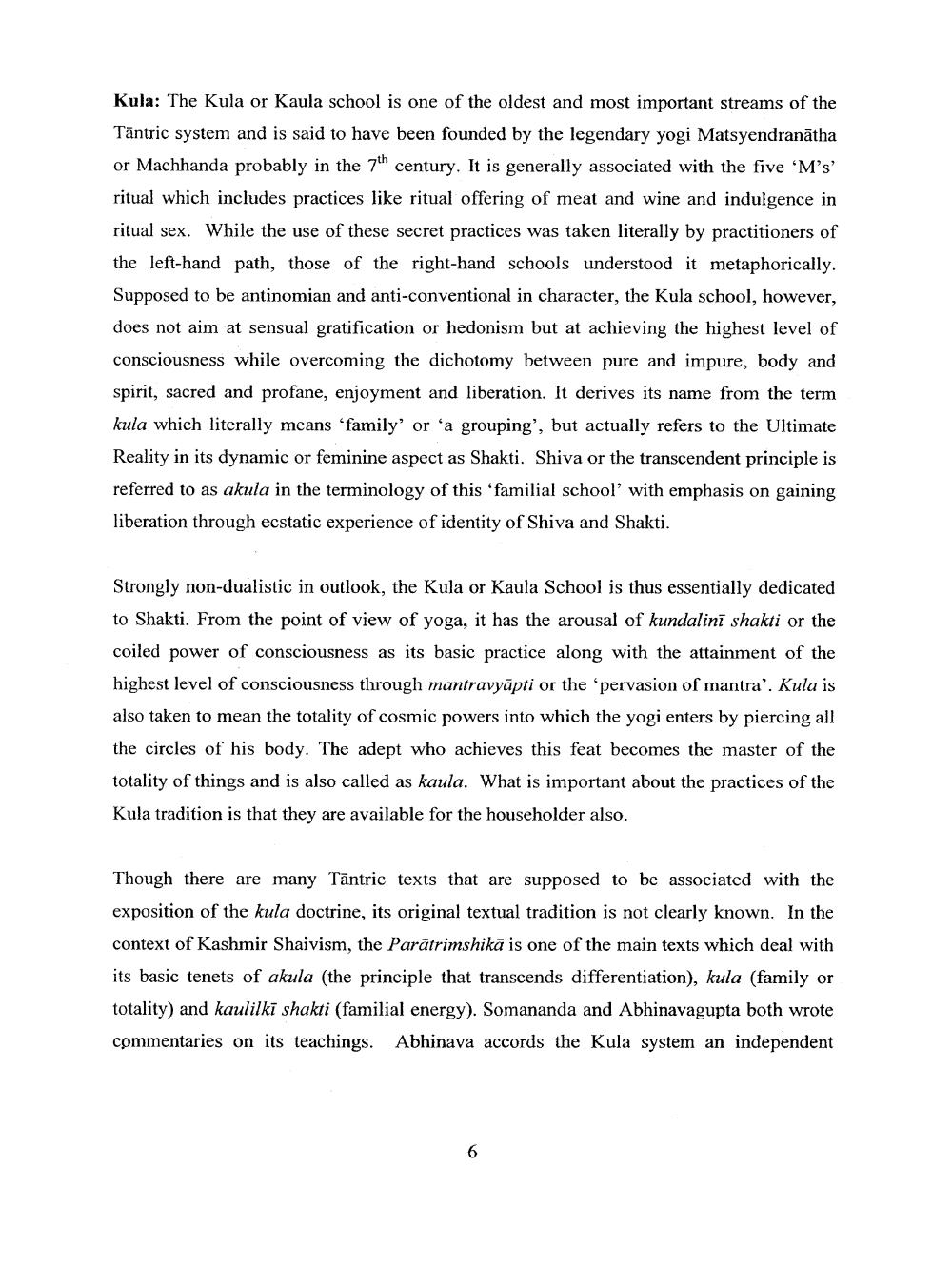Book Title: Yoga of Synthesis in Kashmir Shaivam Author(s): S S Toshkhani Publisher: S S Toshkhani View full book textPage 6
________________ Kula: The Kula or Kaula school is one of the oldest and most important streams of the Tāntric system and is said to have been founded by the legendary yogi Matsyendranātha or Machhanda probably in the 7th century. It is generally associated with the five 'M's ritual which includes practices like ritual offering of meat and wine and indulgence in ritual sex. While the use of these secret practices was taken literally by practitioners of the left-hand path, those of the right-hand schools understood it metaphorically. Supposed to be antinomian and anti-conventional in character, the Kula school, however, does not aim at sensual gratification or hedonism but at achieving the highest level of consciousness while overcoming the dichotomy between pure and impure, body and spirit, sacred and profane, enjoyment and liberation. It derives its name from the term kula which literally means 'family' or 'a grouping', but actually refers to the Ultimate Reality in its dynamic or feminine aspect as Shakti. Shiva or the transcendent principle is referred to as akula in the terminology of this familial school with emphasis on gaining liberation through ecstatic experience of identity of Shiva and Shakti. Strongly non-dualistic in outlook, the Kula or Kaula School is thus essentially dedicated to Shakti. From the point of view of yoga, it has the arousal of kundalini shakti or the coiled power of consciousness as its basic practice along with the attainment of the highest level of consciousness through mantravyāpti or the 'pervasion of mantra'. Kula is also taken to mean the totality of cosmic powers into which the yogi enters by piercing all the circles of his body. The adept who achieves this feat becomes the master of the totality of things and is also called as kaula. What is important about the practices of the Kula tradition is that they are available for the householder also. Though there are many Tāntric texts that are supposed to be associated with the exposition of the kula doctrine, its original textual tradition is not clearly known. In the context of Kashmir Shaivism, the Parātrimshikā is one of the main texts which deal with its basic tenets of akula (the principle that transcends differentiation), kula (family or totality) and kaulilki shakti (familial energy). Somananda and Abhinavagupta both wrote commentaries on its teachings. Abhinava accords the Kula system an independentPage Navigation
1 ... 4 5 6 7 8 9 10 11 12 13 14 15 16 17 18 19 20 21 22 23 24 25 26 27 28 29 30 31 32 33 34 35 36 37 38 39 40 41 42 43 44 45 46
